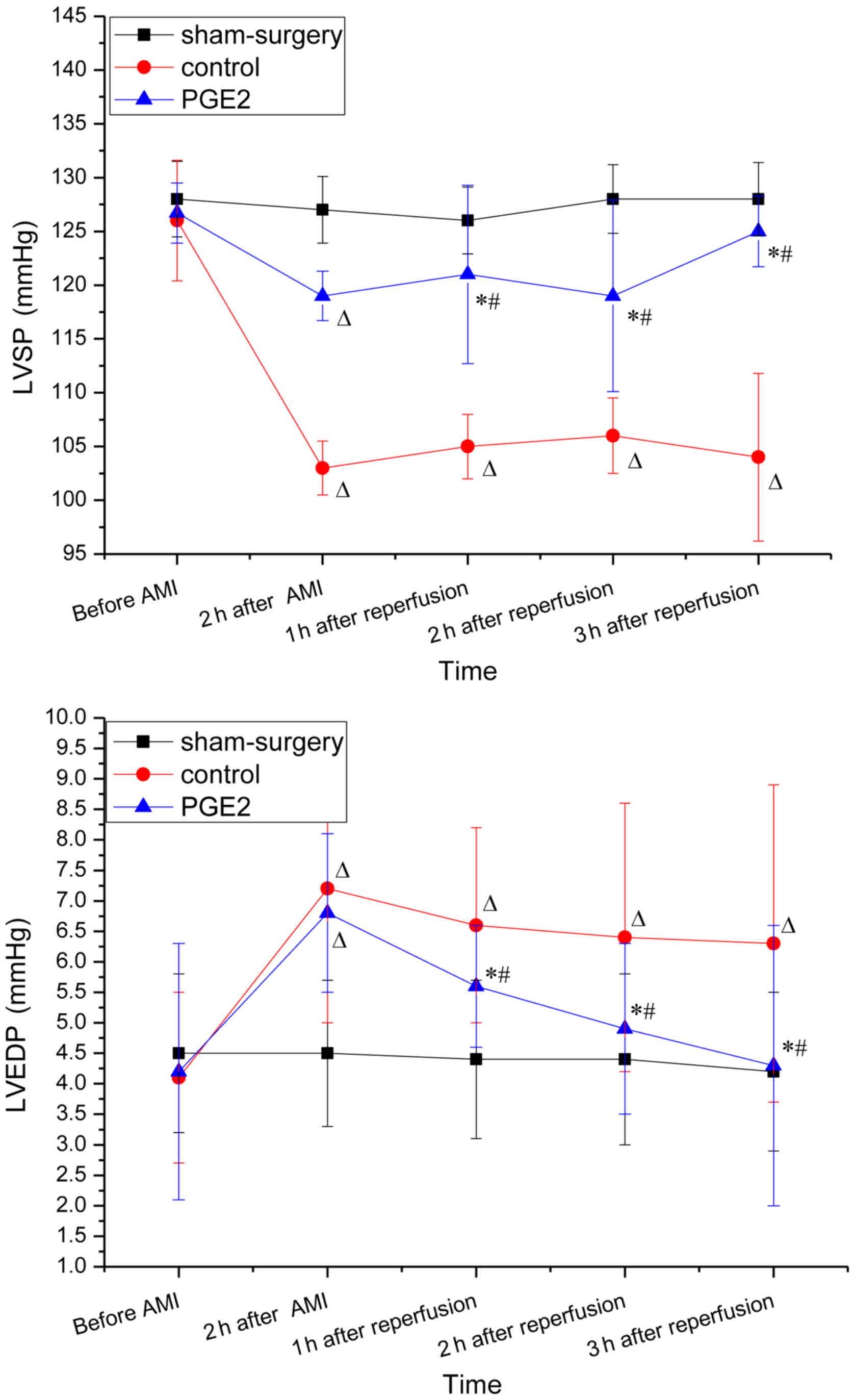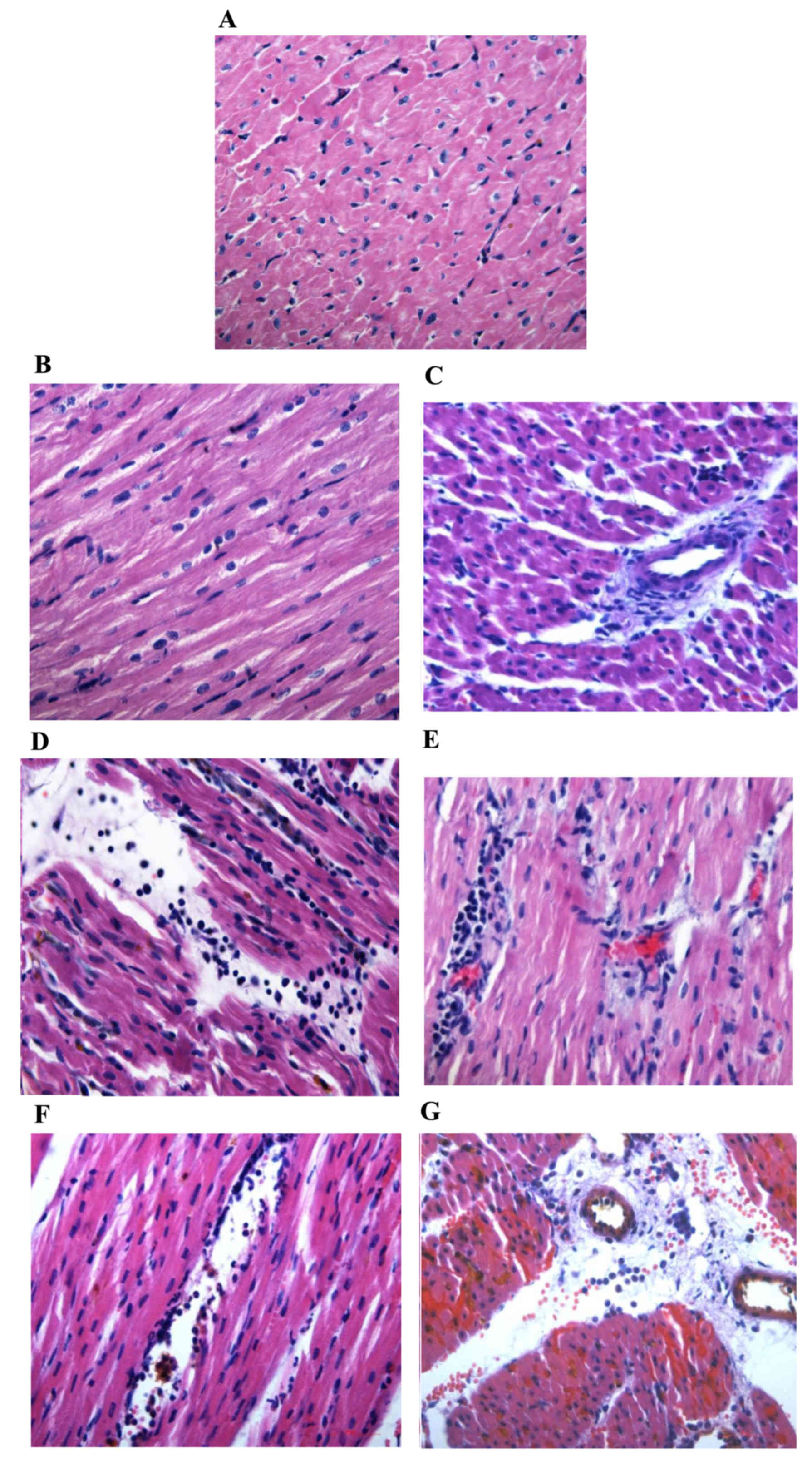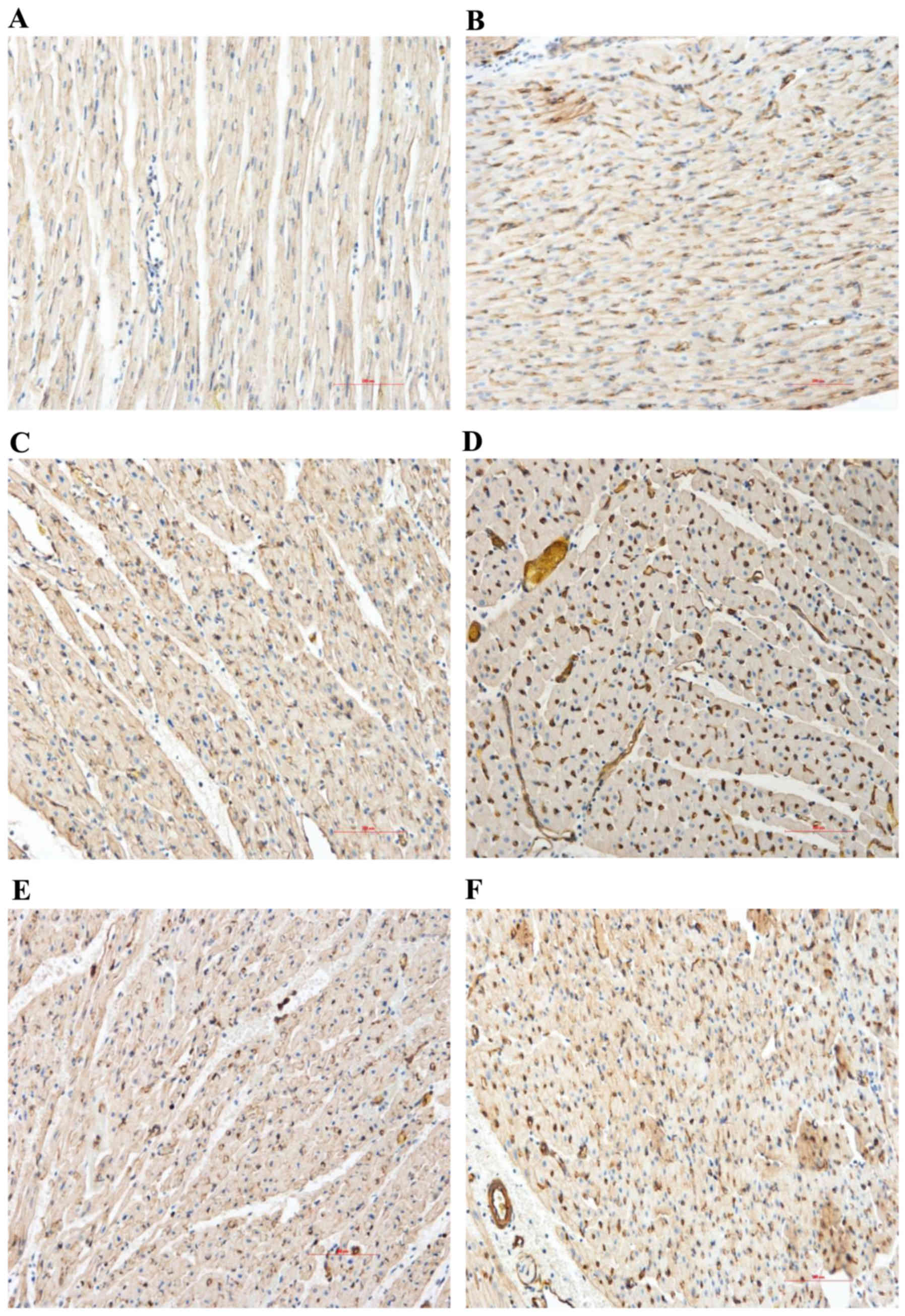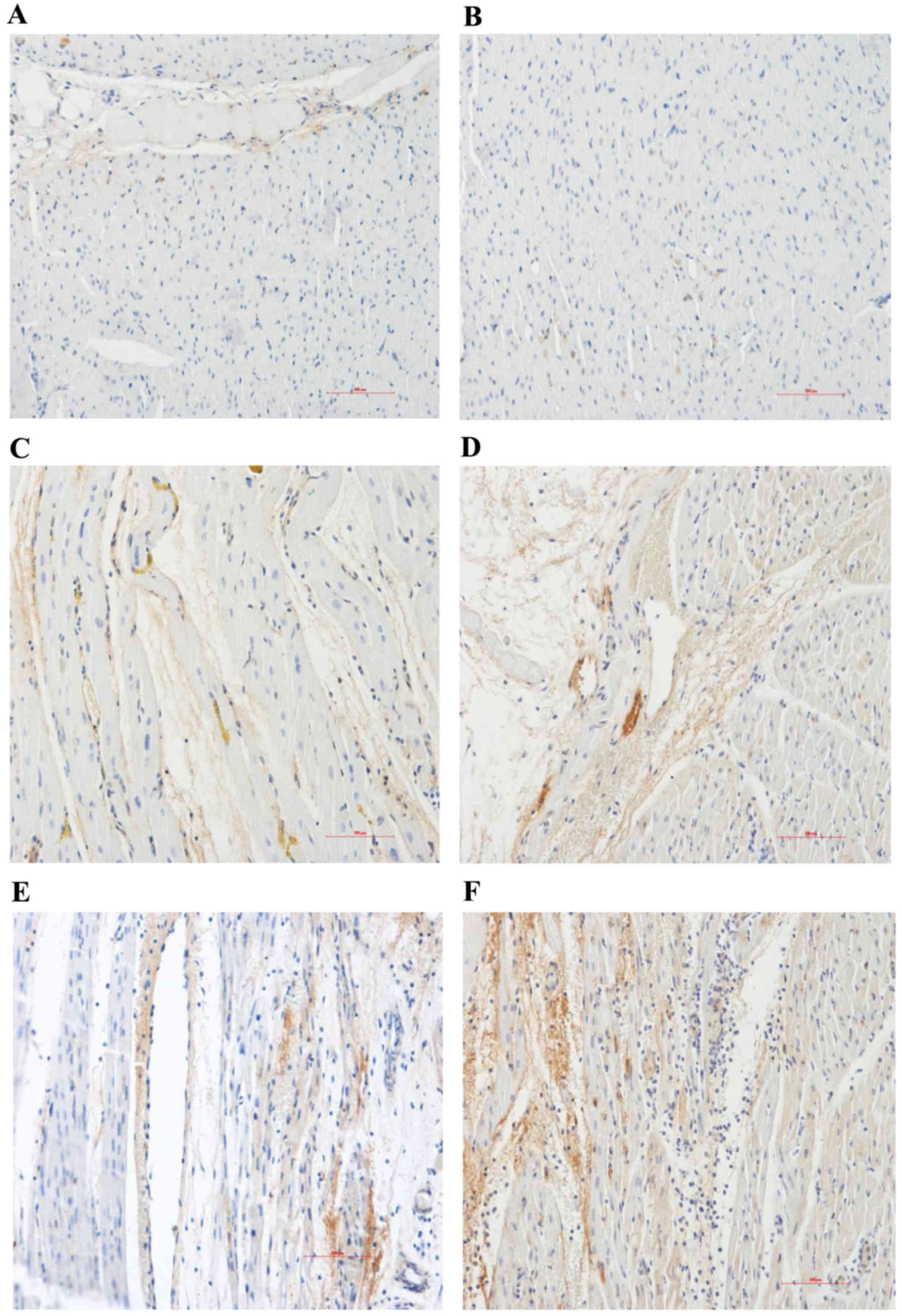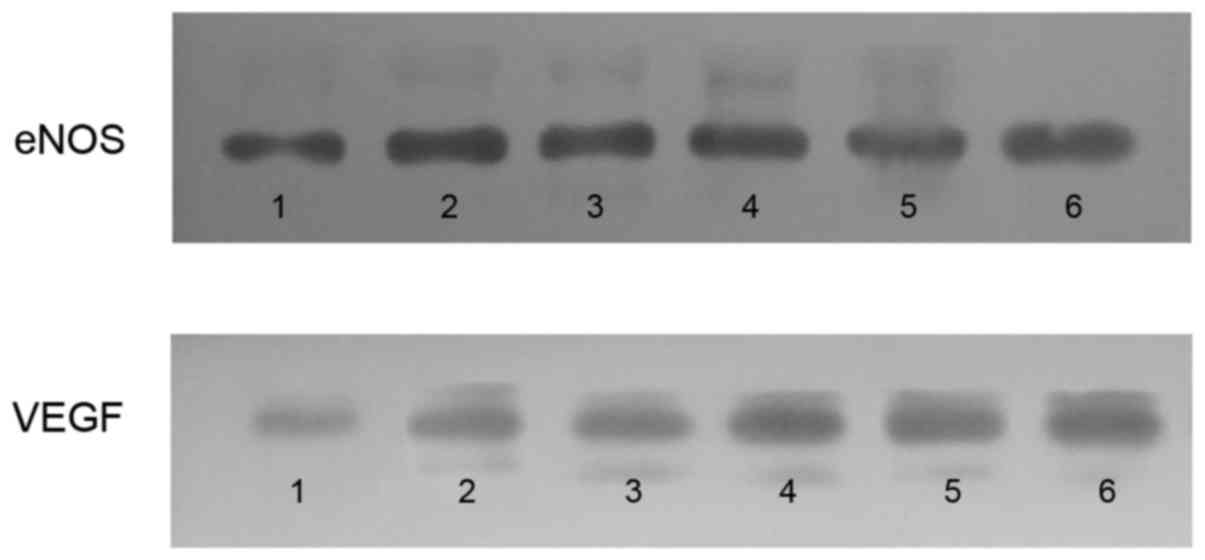|
1
|
Bulluck H, Yellon DM and Hausenloy DJ:
Reducing myocardial infarct size: Challenges and future
opportunities. Heart. 102:341–348. 2016. View Article : Google Scholar : PubMed/NCBI
|
|
2
|
Heusch G, Musiolik J, Gedik N and
Skyschally A: Mitochondrial STAT3 activation and cardioprotection
by ischemic postconditioning in pigs with regional myocardial
ischemia/reperfusion. Circ Res. 109:1302–1308. 2011. View Article : Google Scholar : PubMed/NCBI
|
|
3
|
Wei M, Xin P, Li S, Tao J, Li Y, Li J, Liu
M, Li J, Zhu W and Redington AN: Repeated remote ischemic
postconditioning protects against adverse left ventricular
remodeling and improves survival in a rat model of myocardial
infarction. Circ Res. 108:1220–1225. 2011. View Article : Google Scholar : PubMed/NCBI
|
|
4
|
Hishikari K, Suzuki J, Ogawa M, Isobe K,
Takahashi T, Onishi M, Takayama K and Isobe M: Pharmacological
activation of the prostaglandin E2 receptor EP4 improves cardiac
function after myocardial ischaemia/reperfusion injury. Cardiovasc
Res. 81:123–132. 2009. View Article : Google Scholar : PubMed/NCBI
|
|
5
|
Pang L, Cai Y, Tang EH, Irwin MG, Ma H and
Xia Z: Prostaglandin E receptor subtype 4 signaling in the heart:
role in ischemia/reperfusion injury and cardiac hypertrophy. J
Diabetes Res. 2016:13243472016. View Article : Google Scholar : PubMed/NCBI
|
|
6
|
Infanger M, Faramarzi S, Grosse J, Kurth
E, Ulbrich C, Bauer J, Wehland M, Kreutz R, Kossmehl P, Paul M, et
al: Expression of vascular endothelial growth factor and receptor
tyrosine kinases in cardiac ischemia/reperfusion injury. Cardiovasc
Pathol. 16:291–299. 2007. View Article : Google Scholar : PubMed/NCBI
|
|
7
|
Cao J, Xie H, Sun Y, Zhu J, Ying M, Qiao
S, Shao Q, Wu H and Wang C: Sevoflurane post-conditioning reduces
rat myocardial ischemia reperfusion injury through an increase in
NOS and a decrease in phopshorylated NHE1 levels. Int J Mol Med.
36:1529–1537. 2015.PubMed/NCBI
|
|
8
|
Siu KL, Lotz C, Ping P and Cai H: Netrin-1
abrogates ischemia/reperfusion-induced cardiac mitochondrial
dysfunction via nitric oxide-dependent attenuation of NOX4
activation and recoupling of NOS. J Mol Cell Cardiol. 78:174–185.
2015. View Article : Google Scholar : PubMed/NCBI
|
|
9
|
National Research Council (US) Committee
for the Update of the Guide for the Care and Use of Laboratory
Animals, . Guide for the Care and Use of Laboratory Animals. 8th.
National Academies Press (US); Washington, DC: 2011, PubMed/NCBI
|
|
10
|
Suzuki Y, Lyons JK, Yeung AC and Ikeno F:
In vivo porcine model of reperfused myocardial infarction: in situ
double staining to measure precise infarct area/area at risk.
Catheter Cardiovasc Interv. 71:100–107. 2008. View Article : Google Scholar : PubMed/NCBI
|
|
11
|
Fordyce CB, Gersh BJ, Stone GW and Granger
CB: Novel therapeutics in myocardial infarction: Targeting
microvascular dysfunction and reperfusion injury. Trends Pharmacol
Sci. 36:605–616. 2015. View Article : Google Scholar : PubMed/NCBI
|
|
12
|
Hausenloy DJ and Yellon DM: Myocardial
ischemia-reperfusion injury: A neglected therapeutic target. J Clin
Invest. 123:92–100. 2013. View
Article : Google Scholar : PubMed/NCBI
|
|
13
|
Yang G and Chen L: An update of microsomal
prostaglandin E synthase-1 and PGE2 receptors in cardiovascular
health and diseases. Oxid Med Cell Longev. 2016:52490862016.
View Article : Google Scholar : PubMed/NCBI
|
|
14
|
Kezeli T, Rukhadze T, Gongadze N, Sukoyan
G, Dolidze N, Chipashvili M and Mirziashvili M: Effect of
calcitonin gene-related peptide antagonist on the cardiovascular
events, mortality, and prostaglandin E2 production by
nitrate-induced tolerant rats with acute myocardial infarction.
EPMA J. 7:62016. View Article : Google Scholar : PubMed/NCBI
|
|
15
|
Wang L, Zhang X, Pang N, Xiao L, Li Y,
Chen N, Ren M, Deng X and Wu J: Glycation of vitronectin inhibits
VEGF-induced angiogenesis by uncoupling VEGF receptor-2-αvβ3
integrin cross-talk. Cell Death Dis. 6:e17962015. View Article : Google Scholar : PubMed/NCBI
|
|
16
|
Park YS, Jeon YJ, Kim HS, Chae KY, Oh SH,
Han IB, Kim HS, Kim WC, Kim OJ, Kim TG, et al: The role of VEGF and
KDR polymorphisms in moyamoya disease and collateral
revascularization. PLoS One. 7:e471582012. View Article : Google Scholar : PubMed/NCBI
|
|
17
|
Xie J, Wang H, Wang Y, Ren F, Yi W, Zhao
K, Li Z, Zhao Q, Liu Z, Wu H, et al: Induction of angiogenesis by
controlled delivery of vascular endothelial growth factor using
nanoparticles. Cardiovasc Ther. 31:e12–e18. 2013. View Article : Google Scholar : PubMed/NCBI
|
|
18
|
Simon JN, Duglan D, Casadei B and Carnicer
R: Nitric oxide synthase regulation of cardiac
excitation-contraction coupling in health and disease. J Mol Cell
Cardiol. 73:80–91. 2014. View Article : Google Scholar : PubMed/NCBI
|
|
19
|
Li XD, Yang YJ, Geng YJ, Zhao JL, Zhang
HT, Cheng YT and Wu YL: Phosphorylation of endothelial NOS
contributes to simvastatin protection against myocardial no-reflow
and infarction in reperfused swine hearts: partially via the PKA
signaling pathway. Acta Pharmacol Sin. 33:879–887. 2012. View Article : Google Scholar : PubMed/NCBI
|



